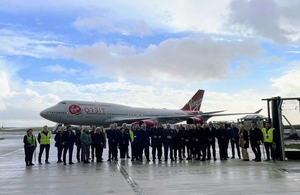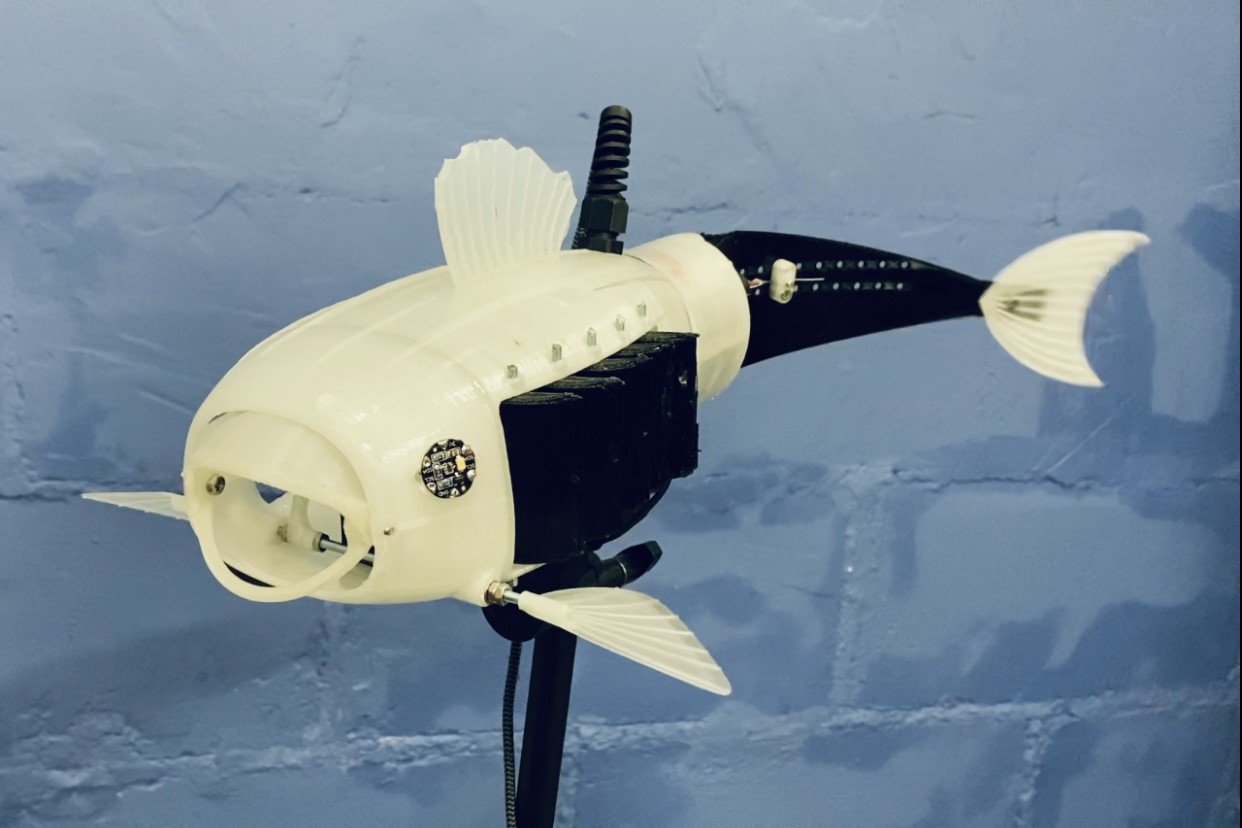
Science Minister, George Freeman, and Transport Technology Minister, Jesse Norman, joined representatives from the UK Space Agency to meet the spaceport people behind the mission and see Virgin Orbit’s LauncherOne rocket and its carrier aircraft, Cosmic Girl.
The launch is still due to take place “later this month” but a date is still not confirmed.
Virgin Orbit has previously completed its rehearsal for the UK launch, and said it’s ready for the Spaceport Cornwall flight.
Both Cosmic Girl – an adapted Boeing 747 – and LauncherOne arrived separately in Cornwall last month, and the rocket is now in place under the wing of the aircraft. And the satellites have already been integrated into the rocket ready for launch.
All is ready except for completion of the licensing process by the UK’s Civil Aviation Authority (CAA) to provide an exact window for the launch.
Virgin Orbit has also highlighted that it has taken longer to get approvals than it planned for. Space News quotes Virgin Galactic Chief Executive Dan Hart saying there was not any “showstopper” preventing completion, but the process has still “just taken time”.
CAA
The House of Commons Science and Technology Committee has also recently criticised delays by the civil regulators, saying it is not providing enough support for the licensing process, which has now been outstanding for the best part of a year for Spaceport Cornwall.
Its report – on UK space strategy and UK satellite infrastructure – states:
“[79] We are concerned that the CAA is not providing enough support for applicants which could cause delays in the licensing process. The Department for Transport (DfT) should ensure that the CAA is suitably resourced to be able to provide an effective liaison service for each licence applicant to support them with navigating the application process.
“[80] The Government must take steps to ensure that the CAA is appropriately resourced to meet the demands of processing increasing numbers of licence applications.“
For the CAA, in terms of spaceflight activities above the stratosphere, the launch of a rocket capable of operating above the stratosphere (circa 50km altitude) is regulated under the Space Industry Act 2018 and thus requires a licence.
How are space launches from the UK approved? ????
As the UK’s space regulator we play a key role in enabling space activities, including licensing of launch operators and spaceports.
Watch the ???? to find out more ???? pic.twitter.com/OmeDefHcJi
— UK Civil Aviation Authority (@UK_CAA) November 4, 2022
Integration Facility
As for the Ministers’ visit, the Space Agency reports they toured the spaceport’s Space Systems Integration Facility, the first of its kind at a spaceport in the UK. It’s here that the satellites have already been integrated into the rocket ready for launch.
“This is one of our most innovative industries, generating new opportunities in Cornwall and beyond, with high-growth companies such as Space Forge, Surrey Satellites, Astroscale, Inmarsat, Open Cosmos, and the thriving Scottish space cluster,” said Science Minister George Freeman.
Payload
What is waiting in the payload of the historic flight?
The Dstl’s (Defence Science and Technology Laboratory) miniaturised space weather instrumentation suite will be among the satellites aboard the launch, for Low-Earth orbit (LEO).
The Coordinated Ionospheric Reconstruction Cubesat Experiment (CIRCE) satellite mission comprises two 6U cube-satellites that will be launched into a near-polar low Earth orbit in a string-of-pearls configuration (targeting 555 kilometres altitude).
Also in the payload will be the first Omani satellite, the CubeSat Aman, which has already successfully prepared for its launch (placed in the launch dispenser, and undergoing a series of checks). The Earth-observation satellite will be Oman’s first space mission.
Image: Science Minister, George Freeman, Transport Technology Minister, Jesse Norman, and members of Spaceport Cornwall, Virgin Orbit and the UK Space Agency in front of Virgin Orbit’s carrier aircraft, Cosmic Girl.







